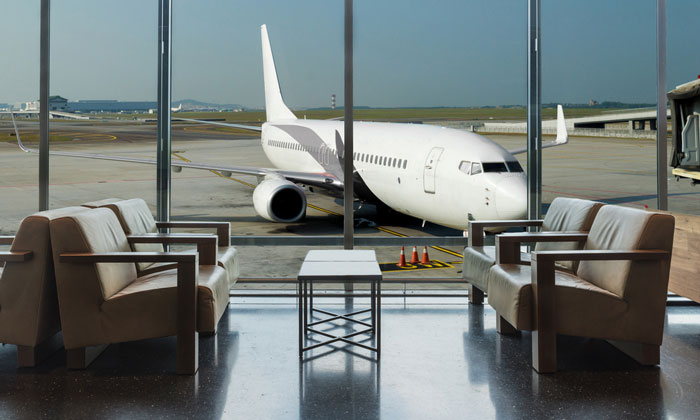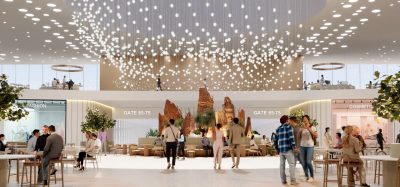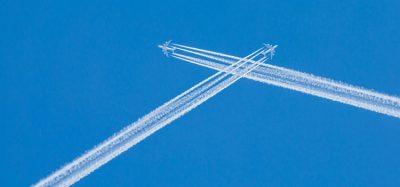Why the shared use airport lounge is gaining ground in the US
Posted: 30 August 2017 | Nancy Knipp | Senior Vice President | Airport Lounge Development | No comments yet
Nancy Knipp, Senior Vice President at Airport Lounge Development explores the reasons behind the rise of the shared airport lounge in the United States.


The International Air Transport Association (IATA) estimates that demand for air travel over the next two decades will double globally, with 7.2 billion passengers traveling each year by 2035. Airports already have a reputation for being crowded and stressful, so it’s no wonder that more travelers within the US are turning to airport lounges to find calm within the storm. In recent years, this demand has led to a transformation of the role of airport lounges in the US and the rise in popularity of the shared use lounge.
In Europe and Asia, the shared use airport lounge is not a new concept, but it’s only more recently that this trend has been sweeping through the United States. Airport Lounge Development has seen this change first hand as we’ve developed lounges both in the U.S. and globally. In just the first two months of 2017, our network of lounges has experienced an over 70% increase in guest volumes year over year.
So, what’s causing this increase in demand for shared use lounges? It comes down to an increase in international travellers coming through U.S. airports, new offerings introducing an increasing number of Americans to the lounge experience, increasing exclusivity of airline owned lounges, and airports looking for additional non-aeronautical revenue.
Join us live: Shaping the Next Generation of Hold Baggage and Air Cargo Screening
Join us live for an insightful webinar on 11th December at 14:00 GMT, in collaboration with Smiths Detection, as we explore the strategic balance of operational efficiency, regulatory compliance, and sustainability in high-volume security environments.
This session offers a focused look into future-proofing your security strategy.
Key learning points
- Cost Reduction: Strategies to minimize bag travel time while simultaneously reducing operational costs.
- Regulatory Roadmap: Insights into the next wave of regulatory changes and their impact on future investment decisions.
- Sustainable Systems: Practical approaches to building sustainability into security systems and lowering the total cost of ownership (TCO).
- Scalable Solutions: Real-world examples of scalable systems supporting current airport growth and preparing for tomorrow.
Register now for expert insights, case studies, and actionable strategies on operational efficiency!
Demand from international travellers
International travellers, especially from Europe and Asia, familiar with frequent lounge use at home, expect the airlines they’re travelling on to offer the same amenities in the US that they have access to in their own countries. Frequent travellers with a specific airline don’t care that their airline might only have five routes through a specific city and there isn’t enough demand for the airline to open up their own lounge. That’s why many airlines have now taken to partnering in shared use lounges to ensure their customers have an outstanding airport experience. At Airport Lounge Development, we’ve partnered with 26 airlines, everyone from British Airways to Emirates to make sure that their passengers have a convenient, comfortable lounge that meets their needs at the airport. For example, for a Middle Eastern airline partner, we’ve customised our lounge offer to make sure there are halal options available, and with Asian carriers, we offer udon noodles and miso soup.
Americans are being introduced to the lounge lifestyle
More U.S. travellers than ever are being introduced to the airport lounge experience thanks to the world’s largest lounge access program, Priority Pass. Priority Pass has agreements with major financial institutions worldwide to offer lounge access to their card members and also enables individual travellers to purchase their own yearly memberships directly.
Business travellers, especially, have come to depend on the work stations, satellite TV, free newspapers and magazines, meeting rooms, and conference phones that lounges offer. In addition, if a traveller wants to use a shower before or after a long voyage, but doesn’t have access to a lounge provided by the airline they are flying, stopping by a shared use lounge is an easy solution. Or if a flight is delayed, day pass access is a popular solution for passing the extra time in the airport in a quiet, peaceful spot with premium amenities.
Airports want to increase non-aeronautical revenue
Airports worldwide are weaving non-aeronautical income sources into their business plans to sustain airport profitability. Research from the ACI Airport Economics Report confirms the success of this strategy. While retail (28.3%) and car parking (22.3%) lead the way in increasing airport revenue, airport lounges are an important area for growth in this diversification.
One of the added benefits of putting in a lounge is that airports can begin utilising second floor spaces that would otherwise go unoccupied or used for back office operations since retailers and restaurateurs naturally want to be on the first floor with the passing foot traffic. At Airport Lounge Development, the airports we work with have increased their concession fees from our shared use lounges by 60% year over year.
In coming years, shared use lounges are likely to continue increasing in popularity as travellers of all ages and nationalities come to expect and depend on a space for calm and relaxation in the airport. Airports that work to increase their offerings to meet that consumer need will improve customer satisfaction and increase their non-aeronautical revenue. Ultimately, more and more travellers are looking for the perfect place to escape and recharge at the airport and shared use lounges are proving just as valuable for travellers as they are economically beneficial for airports and airlines.
Stay Connected with International Airport Review — Subscribe for Free!
Get exclusive access to the latest airport and aviation industry insights from International Airport Review — tailored to your interests.
✅ Expert-Led Webinars – Gain insights from global aviation leaders
✅ Weekly News & Reports – Airport innovation, thought leadership, and industry trends
✅ Exclusive Industry Insights – Discover cutting-edge technologies shaping the future of air travel
✅ International Airport Summit – Join our flagship event to network with industry leaders and explore the latest advancements
Choose the updates that matter most to you.
Sign up now to stay informed, inspired, and connected — all for free!
Thank you for being part of our aviation community. Let’s keep shaping the future of airports together!


















